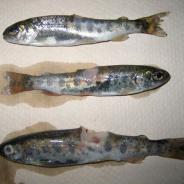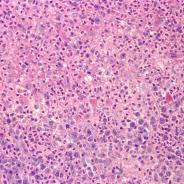also known as
BCWD
Flexibacter psychrophilus
Cytophaga psychrophila
Rainbow Trout Fry Syndrome (RTFS)
bacterial fry anemia
low temperature disease
peduncle disease
saddleback
tail-rot
systemic myxobacteriosis
Infection with this 'cold loving' bacterium usually starts at the extremities but becomes systemic. Erosion of the caudal fin (tail) is common and tissue necrosis of the caudal peduncle often progresses to exposure of the vertebrae. Skin lesions can occur elsewhere. Fish can become infected at any life stage; transmission can occur horizontally via the water column, or vertically from adults to eggs. The gram-negative bacterium has long , filamentous rods and forms yellow colonies with thin spreading margins (resembling a fried egg) on TYES agar. It is not harmful to humans or other mammals.
Distribution
North America, Europe, Scandinavia, Japan, Southeast Asia, Australia and Chile
Hosts
salmonids, but many aquatic vertebrates are susceptible
Detection Methods:
PCR - unspecified
References


